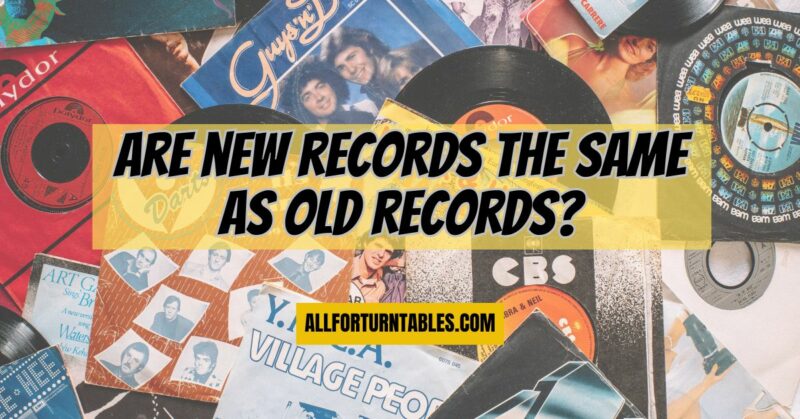The vinyl record, a format that has spanned generations, continues to captivate music lovers and collectors alike. With the resurgence of vinyl in recent years, a pertinent question arises: are new records the same as old records? In this comprehensive article, we will explore the similarities and differences between new and old vinyl records, considering factors such as sound quality, manufacturing techniques, and the overall listening experience.
- Sound Quality:
One of the most crucial aspects of any vinyl record is its sound quality. Old records, particularly vintage ones from the mid-20th century, were often pressed using analog techniques that may result in a warmer, more character-filled sound. These records can also exhibit the occasional pops, crackles, and surface noise associated with aging.
New records, on the other hand, benefit from advances in manufacturing technology and audio mastering. They are typically pressed with greater precision, using higher-quality vinyl compounds. Additionally, modern audio mastering techniques offer improved clarity and a wider dynamic range. While some listeners appreciate the nostalgia and analog charm of old records, others prefer the cleaner, more accurate sound of new pressings.
- Manufacturing Techniques:
Manufacturing techniques have evolved significantly over the years. Older records may have been pressed on equipment that has long been retired, potentially resulting in variations in quality and consistency. New records, produced with contemporary machinery and quality control standards, tend to be more uniform and reliable.
- Material Quality:
The quality of vinyl used in records has improved in recent years. Modern records often use high-grade vinyl compounds that are less prone to warping and surface defects. Old records, especially those from the 1970s and earlier, may be more susceptible to wear and degradation due to their composition.
- Artwork and Packaging:
Another aspect to consider is the packaging and artwork. Old records often feature classic cover art and labels that can be nostalgic and collectible. New records may come in a variety of packaging options, including high-quality gatefold sleeves and color variants, catering to both collectors and casual listeners.
- Rarity and Collectibility:
Old records, especially those from limited pressings or by obscure artists, can be highly sought after by collectors. They may have historical significance or unique manufacturing quirks that contribute to their value. New records, while lacking the same historical cachet, can also become collectibles, particularly if they are limited editions or include exclusive content.
- Availability:
Availability is a significant consideration. New records, by virtue of being recently produced, are more readily available in stores and online. On the other hand, certain old records may be out of print and harder to find, necessitating visits to record shops or online marketplaces.
- Condition and Handling:
The condition of a vinyl record, whether old or new, can significantly impact its playability and sound quality. Old records may have accumulated wear and scratches over the years, while new records, when handled and stored correctly, start with a clean slate and have the potential for a longer lifespan.
In summary, whether new records are the same as old records depends on various factors, including personal preference, nostalgia, and the specific release in question. New records generally benefit from advancements in manufacturing technology, offering improved sound quality and durability. However, old records hold a unique charm for collectors and enthusiasts, featuring classic artwork, historical significance, and analog character. Ultimately, the choice between new and old records is a matter of individual taste, with both options contributing to the enduring appeal of vinyl in the digital age.


